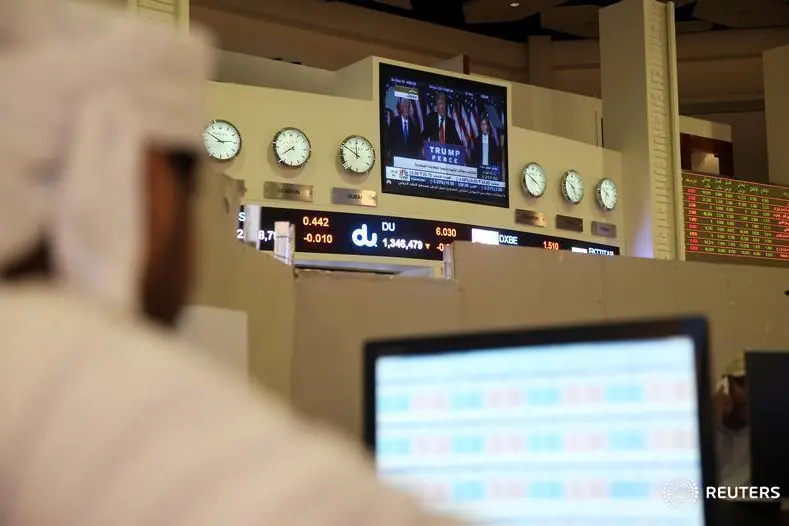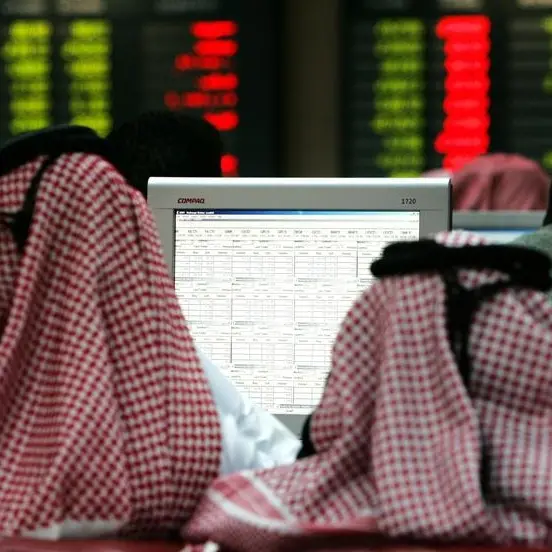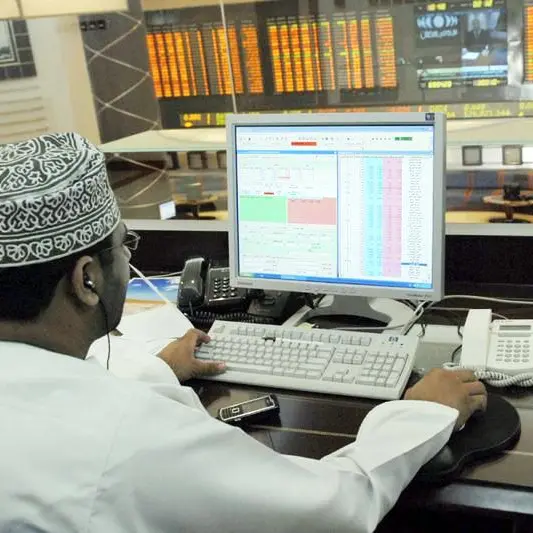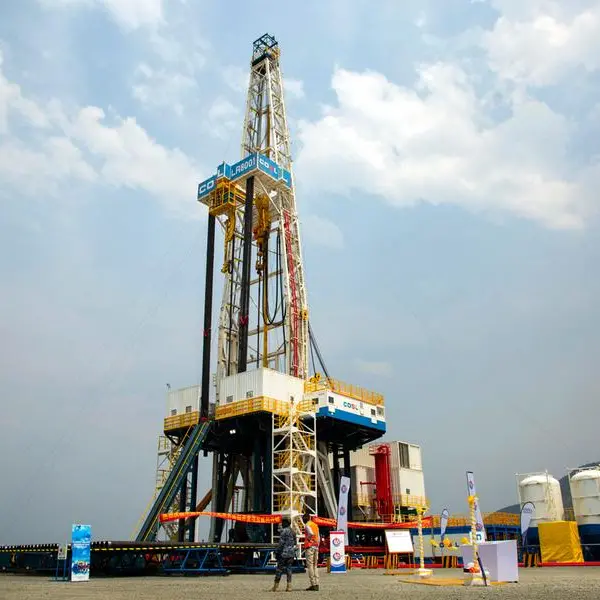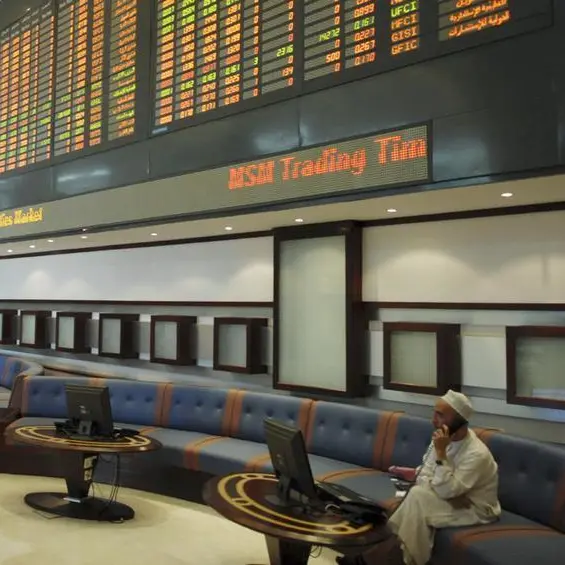PHOTO
The combined third-quarter 2019 net profit of the four largest banks in the UAE, which account for nearly 70 percent of total bank assets, rose by 34 percent year-on-year despite some economic headwinds, slower GDP growth, and key rate cuts by the US Federal Reserve.
Emirates NBD, First Abu Dhabi Bank, Dubai Islamic Bank and Abu Dhabi Commercial Bank saw their aggregate net income rise to 10.77 billion dirhams ($2.9 billion), up from 8.04 billion dirhams in the same quarter of 2018, according to S&P Global Market Intelligence data.
Shabbir Malik, banking analyst at EFG-Hermes, called the bank results “good” and added that “there has been some pressure due to net interest margin (NIM) compression after the US Federal Reserve cut its rates, but that was expected.”
Emirates NBD saw its third-quarter net profit nearly double year-on-year to 5 billion dirhams. However, the bottom-line was boosted by one-off gains amounting to 2.3 billion dirhams from the sale of a stake in payments processor Network International and a 141.5 million dirham gain on its purchase of Turkey’s Denizbank. The lender made a net profit of 2.64 billion dirhams in the year-ago period.
“Discounting the one-off gains, the weakness of the Q3 stand-alone results was not surprising,” Malik said. “Provisioning was higher, but that was indicated by the management, and NIM declined because of lower rates.
In its earnings call, Emirates NBD said the positive impact of the acquisition of DenizBank helped increase its net interest margin to 2.8 percent.
“The margins for both Dubai-based banks (ENBD and DIB) expanded during the quarter primarily on the back of consolidating the newly acquired bank in Turkey by the former and the latter’s relatively high retail exposure,” said Monsef Morsey, co-head of research at CI Capital.
DIB, the largest Shariah lender in UAE, saw its Q3 2019 rise by 1 percent year-on-year to 1.26 million dirhams on higher income from financing and investment. “Financing and sukuk growth were decent, net profit margin improved and provisioning was under control,” Malik said.
FAB, the largest lender in the UAE by assets, reported a 3 percent rise in third-quarter net profit to 3.1 billion dirhams, which was broadly in line with its guidance. Net interest income rose by 2 percent while loans and advances rose by 7 percent on year to 378 billion dirhams. Deposits totaled 477 billion dirhams, up by 5 percent. The bank booked impairments worth 469 million dirhams in the third quarter, up 8 by percent on the year.
“FAB’s balance sheet growth was good, and it is best positioned where credit quality is concerned due to its low NPL ratio, satisfactory coverage and low provisioning charges,” said Malik.
Meanwhile, ADCB saw a 13 percent decline in profits for the third quarter of 2019 to 1.4 billion dirhams on lower-interest income. The bank merged with Union National Bank in May this year, and the combined entity then acquired Al Hilal Bank. The bank expects to see 840 million dirhams in cost benefits from its merger.
“ADCB is in a transitional stage [since] the merger with UNB and Hilal. It should see improvement by next year, by which time the cost energies of the merger should also be realized. Provisioning was on the higher side. However, I believe its normalized level should be lower,” Malik said.
ASSET QUALITY
On the asset quality front, a more conservative approach by banks with regard to real-estate and construction-sector loans as well as efforts to collateralize that exposure with the cash receipts seem to have largely paid off.
According to S&P Global Market Intelligence data, FAB, ENBD and ADCB all recorded year-on-year improvements in asset quality, but DIB posted a slight uptick in nonperforming loans (NPLs).
Malik said that banks’ credit quality has seen some deterioration, but the trends so far are not worrisome. “The adoption of IFRS 9 forces banks to recognize provisions earlier; this has likely kept provisioning under control.”
Property accounts for around one-fifth of UAE banks’ gross loans, according to Fitch Ratings, though the true exposure is higher when retail mortgages and lending to companies that finance development are taken into account.
“UAE banks are increasingly at risk of deteriorating asset quality due to a weakening domestic property sector, with real-estate prices more than 20 percent below their 2014 peak,” it said in a recent note.
According to CI Capital’s Morsey, “In our view, the slowdown in the property market took its toll on real estate collaterals, given the overall drop in property prices. This was coupled by a lower level of recoveries of doubtful loans by most of the UAE banks.”
Moody’s expects the UAE banks’ NPLs to rise to about 5.5 percent of gross loans this year compared to 4.8 percent as at the end of 2018.
LOANS GROWTH
UAE banks’ performances in the quarter have also been helped to some extent by a pick-up, albeit subdued, in credit growth in recent months, underpinned by strong growth in the government and government-related entities (GRE) segments.
“In 3Q 19, loans grew by 1.7 percent year-on-year, mainly driven by loans to the government and GREs (+8.9 percent and +1.5 percent),” said Morsey.
He said this was supported by the declining interest rate environment and to a lesser extent by the government’s efforts to stimulate activity.
Last year, the Abu Dhabi government said it would roll out a three-year 50-billion-dirham stimulus package, equivalent to about 1.8 percent of its annual GDP, to spur economic growth, encourage foreign investment and boost the private-sector non-oil economy.
At Emirates NBD, loans grew by 2 percent in the third quarter following flat growth in the second quarter. At FAB, group CFO James Burdett announced in an earnings call that loans were up by 7 percent. At ADCB, loans and advances slipped by 1 percent at the end of
September as compared to the previous quarter. For DIB, income from Islamic financing and investing transactions rose by 8 percent.
(Writing by Brinda Darasha, editing by Seban Scaria seban.scaria@refinitiv.com)
Our Standards: The Thomson Reuters Trust Principles
Disclaimer: This article is provided for informational purposes only. The content does not provide tax, legal or investment advice or opinion regarding the suitability, value or profitability of any particular security, portfolio or investment strategy. Read our full disclaimer policy here.
© ZAWYA 2019